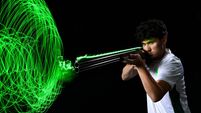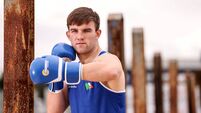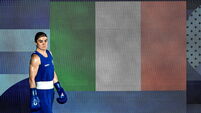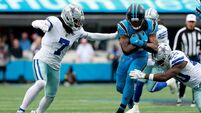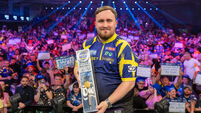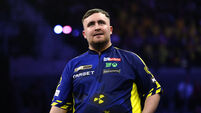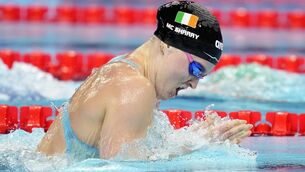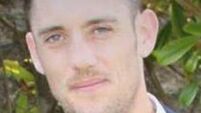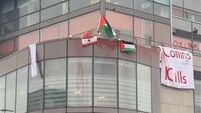A-Z of Ireland and the Irish at the Winter Olympic Games
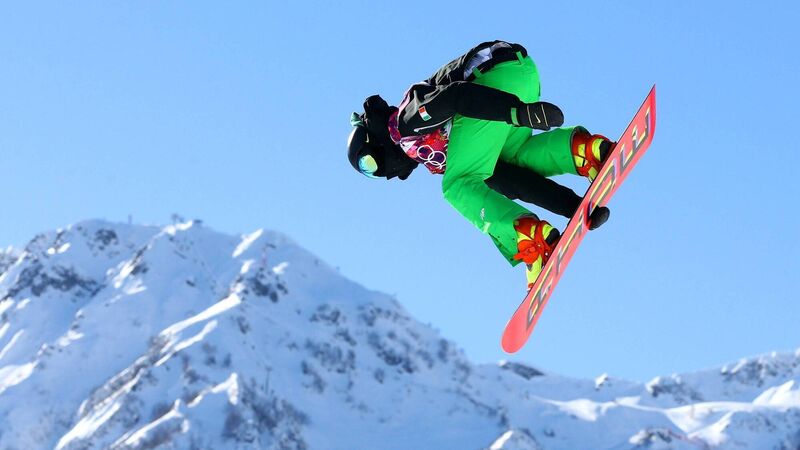
Seamus O'Connor competes at the Sochi 2014 Winter Olympics at Rosa Khutor Extreme Park. Picture: Cameron Spencer/Getty Images
A is for Albertville
What Olympic Council of Ireland (OCI) president Pat Hickey described as “a bright new adventure in Irish sport” began at Albertville on February 8, 1992 when Irish competitors, led by flag-bearer Pat McDonagh, stepped out in an opening ceremony of a Winter Olympic Games for the first time.
B is for Bobsleigh
The pioneering Irish athletes competed in the bobsleigh event at Albertville. The 46 teams from 25 nations that contested the 2-man bobsleigh competition at Albertville included two Irish teams. Terry McHugh and Pat McDonagh formed the Ireland 1 combination with Gerry Macken and Malachy Sheridan in the Ireland 2 bob. McDonagh and McHugh finished in 32nd place whilst Macken and Sheridan were 38th.
C is for Canada
Canada’s gold medal winning ice hockey teams of 2002 included two Irish-born players Owen Nolan and Geraldine Heaney on their gold medal-winning teams. Heaney, born in Lurgan, Co Armagh, was like Katie Taylor a significant breaker of gender barriers and became a pioneer of women’s ice hockey in Canada. Heaney helped Canada win the silver medals when the sport was included in the Winter Games for the first time in 1998 and was a member of the Canadian team that won Olympic gold by beating the USA at Salt Lake City in 2002. Belfast-born Owen Nolan also represented Canada at the 2002 Games and played in six matches including the final as Canada took home their first Olympic ice hockey gold medals in 50 years.
D is for Diaspora
Non-snow sport nations cast a wide net to select competitors to compete in the Winter Games. As an emigrant state the potential of the diaspora for Ireland is immense. Peter-Paul Schwarzacher-Joyce, the London-born, Austrian-reared, USA-based son of an Irish mother was the first of Irish heritage to compete for Ireland when he became the first to represent Ireland in Olympic skiing in 1998 at Nagano but it wasn’t until the Sochi Games of 2014 that the diaspora really triumphed where the five athletes representing Ireland were born in San Diego, Sutton Coldfield, Vancouver, and Reading, and the parents of Jan Rossiter, the only Irish-born competitor, moved to Kingston, Ontario shortly after Jan was born.
E is for Expansion
Ireland’s participation in the Winter Olympics took place in association with the expansion in the number of participating nations. The International Olympic Committee (IOC) engaged in a strategy designed to encourage Olympic committees, especially those in the no-snow states, to compete in the Winter Games. The Games expanded rapidly between 1992 and 2018. At Albertville in 1992, 2, 031 competitors representing 64 nations competed; in 2018 in PyeongChang (South Korea) 93 nations and 2, 793 athletes competed.
F is for Furlong
Clonmel-native John Furlong who emigrated to Canada in the early 1970s played a significant part in the success of the 2010 Winter Games in Vancouver. He was the President and Chief Operating Officer of the Vancouver 2010 Bid Corporation that secured the Games for the Canadian city during which time he worked closely with Pat Hickey to secure European support for Vancouver. Furlong was then appointed CEO of the Vancouver Organising Committee that delivered one of the finest Winter Games.
G is for G-forces
G-force is the force of gravity on an object during acceleration and managing these forces is one of the challenges faced by competitors in bobsleigh, skeleton, and luge racing. Astronauts lifting off on a rocket experience in the region of three G-forces whereas G-forces of up to five are experienced by athletes in banked turns as they hurtle down a track normally in the region of 1,500 metres in length at speeds of between 120-150km/h.
Elsa Desmond, the first Irish luge competitor in Olympic history, will experience these forces in Beijing when she takes part in the fastest event in Winter Olympics.
H is for Henley
The story of Ireland’s association with the Winter Games began at the Royal Regatta in Henley in 1985. During regatta week, Larry Tracey, pinned an envelope on the Irish boats competing there with an invitation for rowers interested in forming an Irish bobsleigh team to compete in the Olympics to make contact. Pat McDonagh and Gerry Macken of the Neptune Rowing Club accepted the invite and in November, they linked-up with Tracey in London and travelled to a school for bobsleigh drivers at Igls in Austria and obtained their driving licences. Various combinations of drivers and brakemen then competed on the international bobsleigh racing circuit in an attempt to achieve Olympic qualification but unfortunately, the decision makers of the OCI failed to appreciate or understand the pioneering initiative of those involved and in January 1985 the OCI refused to sanction their selection for the Calgary Games.
I is for Interlocutory Injunction
The first attempt by Irish athletes to compete in the 1988 Winter Olympics began at Henley and ended in the High Court on February 1, 1988 when a High Court request for an interlocutory injunction failed as Mr Justice Blayney was unable to order the OCI to reinstate the entry without hearing the case and time constraints made this impossible. Larry Tracey had the final say on the issue in a full-page advertisement in the Irish Press on June 8, 1988.
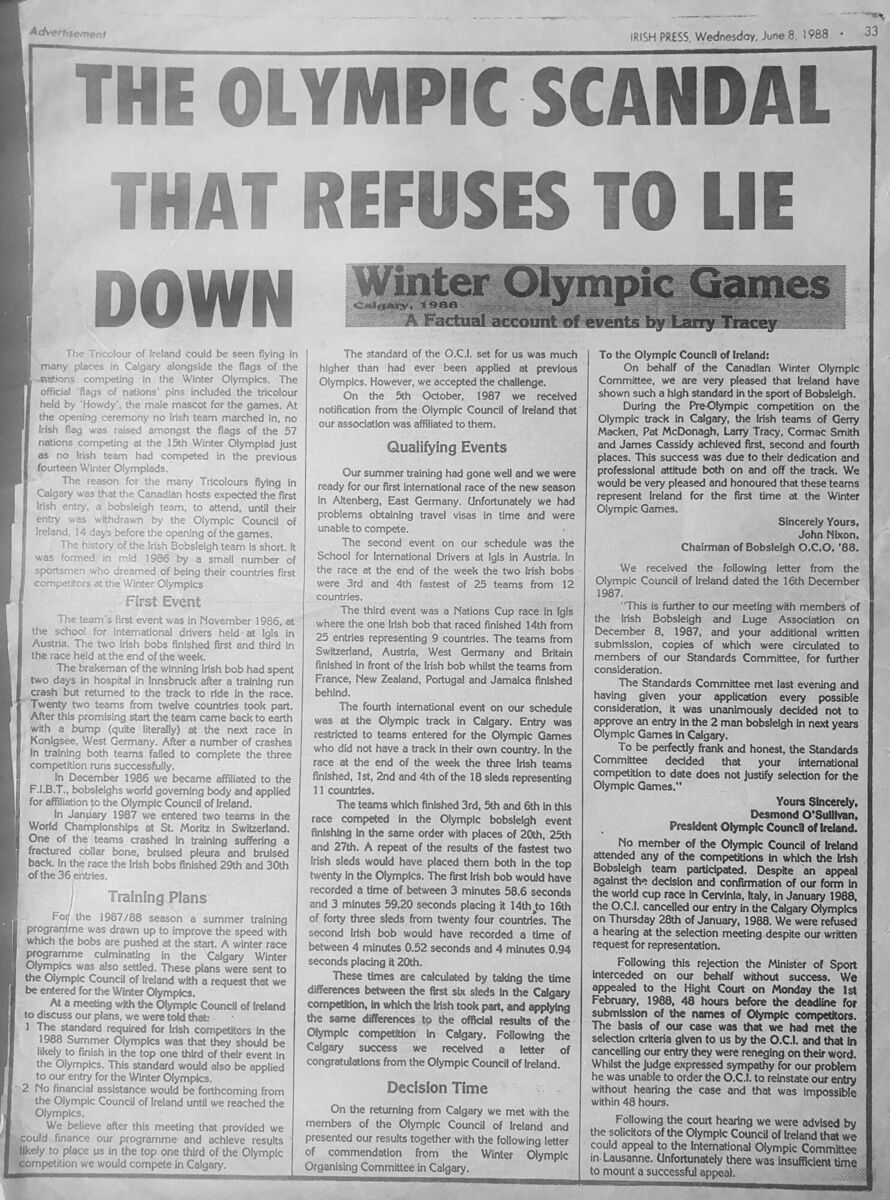
J is for Jamaica
The Irish bobsleigh team might not have made it to Calgary in 1988 but the bobsleigh competition included entrants from several countries with little or no snow including Jamaica whose Olympic story was immortalised, with some liberties, in the film Cool Runnings.
K is for Kirsten
Kirsten McGarry is the only woman to have represented Ireland in two Winter Olympic Games. She competed in the Alpine Slalom, and Giant Slalom events in Torino (2006) and Vancouver (2010). Kirsten was also the flag bearer at the Opening Ceremony in Torino.
L is for Lillehammer
The missing venue since Ireland first competed in 1992. The Lillehammer Games were held in February 1994, the only occasion on which the Winter Games have been held just two years apart in order to separate the Winter and Summer Games. In December 1992, the OCI’s executive members unanimously agreed not to enter athletes for the 1994 Games in any discipline due to the prevailing economic circumstances and the difficulties of funding the Summer Games.
M is for McGarry
The McGarry sisters were the first family of Irish skiing in the 1990s and 2000s and are the only sisters to have competed for Ireland in the Winter Olympics. Tansen McGarry was the first woman to represent Ireland competing in Alpine Skiing in 2002 at Salt Lake City. She was also honoured as the flag bearer at the Opening Ceremony. Her sister Kirsten as we have seen also competed.
N is for Numbers
Thirty-one different competitors including six female athletes have represented Ireland in the Winter Olympics. Sixteen competed in the various skiing disciplines and 15 in bobsleigh including the skeleton.
O is for Olympians
Terry McHugh and Pat McDonagh are members of a distinguished band of athletes who have competed in both the Summer and Winter Olympics. McDonagh competed in rowing in 1980 and 1988 whilst javelin specialist McHugh made his Summer Games debut in 1988 and went on to compete in Barcelona, Atlanta and Sydney. Both competed in Albertville; McHugh was also a member of the Ireland 2-man and 4-man bobsleigh team in 1998 in Nagano (Japan) giving him six Olympic appearances, the most by any Irish athlete.
P is for Prince
Not the fellow that rocked Páirc Uí Chaoimh back in the day but Prince Albert of Monaco who became friendly with the Irish bobsleigh competitors over their years on the circuit. Prince Albert, Pat McDonagh, and Gerry Macken were classmates when the Irish-duo first attended driving school in 1986 and a friendship developed with Albert who was conscious of his Irish heritage. In the lead up to the 1998 Games, the Irish 4-man crew competed using a rented bobsleigh. Courtesy of the support and generosity of Prince Albert, the Irish crew competed in some style at Nagano. The Monégasque became aware of the Irish team’s difficulties and supplied them with a 4-man bobsleigh, paid for its transportation to Nagano and made it available for practice in the week prior to the competition.
Q is for Quota and Qualification
Qualification for the Winter Olympics is an exacting and demanding process and for Irish athletes has always required immense personal, financial, and career sacrifice. And qualification offers no guarantee of selection, as Brian Kennedy and Stephen O’Mara discovered recently.
They qualified for the Beijing Games under the International Skiing Federation (FIS) rules as Ireland was granted a quota of three places for cross-country skiing. However, the Snowsports Association of Ireland (SAI) decided not to nominate Kennedy and O’Mara for selection after considering the association’s nomination criteria, which included performances during the qualifying period, previous results in major competitions and the potential to deliver a notable result in a major competition.
R is for recognition
The 1988 dispute wasn’t the only one associated with Winter Olympic participation; after its formation the Irish Sports Council (ISC) refused to recognise winter sports associations despite the best efforts of the OCI and it wasn’t until the Torino cycle that the campaign for ISC recognition was granted.
The ISC refused to provide any funding for athletes even though Irish competitors qualified through the systems defined by their international federations. Individuals were unable to access any state support and were also ineligible for any of the ancillary supports available to the carded athlete. The quest for recognition became something of a political football as the OCI and the ISC battled for control of Olympic sport as the President of the OCI, Pat Hickey championed the Winter Olympic cause.
S is for Sisters
The Hoey sisters, Siobháin and Aoife, were pioneers of women’s bobsleigh in Ireland but Olympic qualification eluded Siobháin in 2002 and 2006.
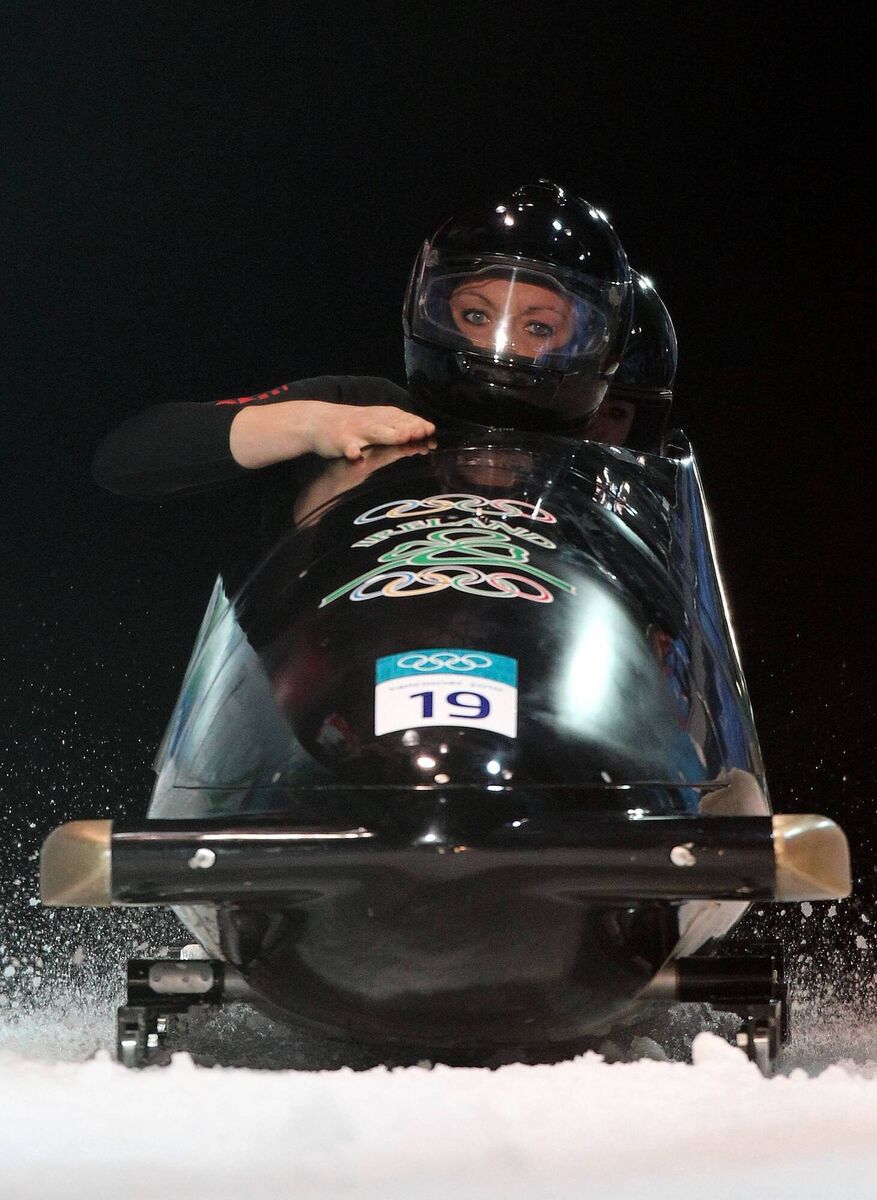
The Hoey mission was accomplished when Aoife and Claire Bergin became the first and only Irish women to compete in Olympic bobsleigh at Whistler in 2010. Siobháin Hoey was appointed Chef de Mission and created Irish Olympic history by becoming the first woman to hold the position.
T is for Tracey
Larry Tracey was a London-born son of a mother from Maguire’s Bridge, County Fermanagh and a father from Naas, County Kildare. When Larry’s wife made him a present of a week-long vacation at St Moritz that included lessons in bobsleigh driving, she kick-started his fascination with the sport. At the end of the vacation, Larry Tracey, a successful businessman, was a licensed bobsleigh driver with a new obsession, that culminated with his attempt to compete for Ireland in the 1988 Winter Olympics. Despite the 1988 setback, Treacy was the driving force behind the project to compete in the 1992 Games. He provided funds for equipment, transport, athletes’ travel, and accommodation and was appointed Chef de Mission for the Albertville Games.
U is for Unintended Consequences
When Philip Conway returned to Ireland from the USA in 1973 he began a mission to revive the culture of hammer and weight throwing in a country where the activities were virtually extinct. Conway’s mission succeeded, the Irish record book for the weight events was re-written and throwers became a significant presence on Irish Olympic teams between 1980 and 2000. The law of unintended consequences also kicked in. The availability of weight event athletes, with their explosive power provided brakemen for the Irish bobsleigh teams in the 1992, 1998 and 2002 in particular Terry McHugh, Simon Linscheid and Garry Power.
V is for venues
Ireland’s Winter Olympic participation has seen Irish athletes display their talents on the Winter Olympic stage at Albertville (1992), Nagano (1998), Salt Lake City (2002), Torino (2006), Vancouver (2010), Sochi (2014) and PyeongChang (2018).
W is for Wrottesley
Lord Clifton Hugh Lancelot de Verdon Wrottesley was born in Dublin in 1968. The Wrottesley family were engaged in a pig farming enterprise at the time and resided in Abbeyknockmoy, County Galway.
The London Evening Standard in its Olympic preview described Wrottesley as one ‘who couldn’t appear to be more English if he lay down on his skeleton bob in bowler, carrying a brolly and a copy of The Times.’ Educated at Eton and Edinburgh University. Clifton delivered his maiden speech as a Conservative peer in the House of Lords in 1996. He served in the Grenadier Guards until 1995 and his service included a tour of duty in Crossmaglen, Co Armagh, not part of the normal career profile of an Irish Olympian.
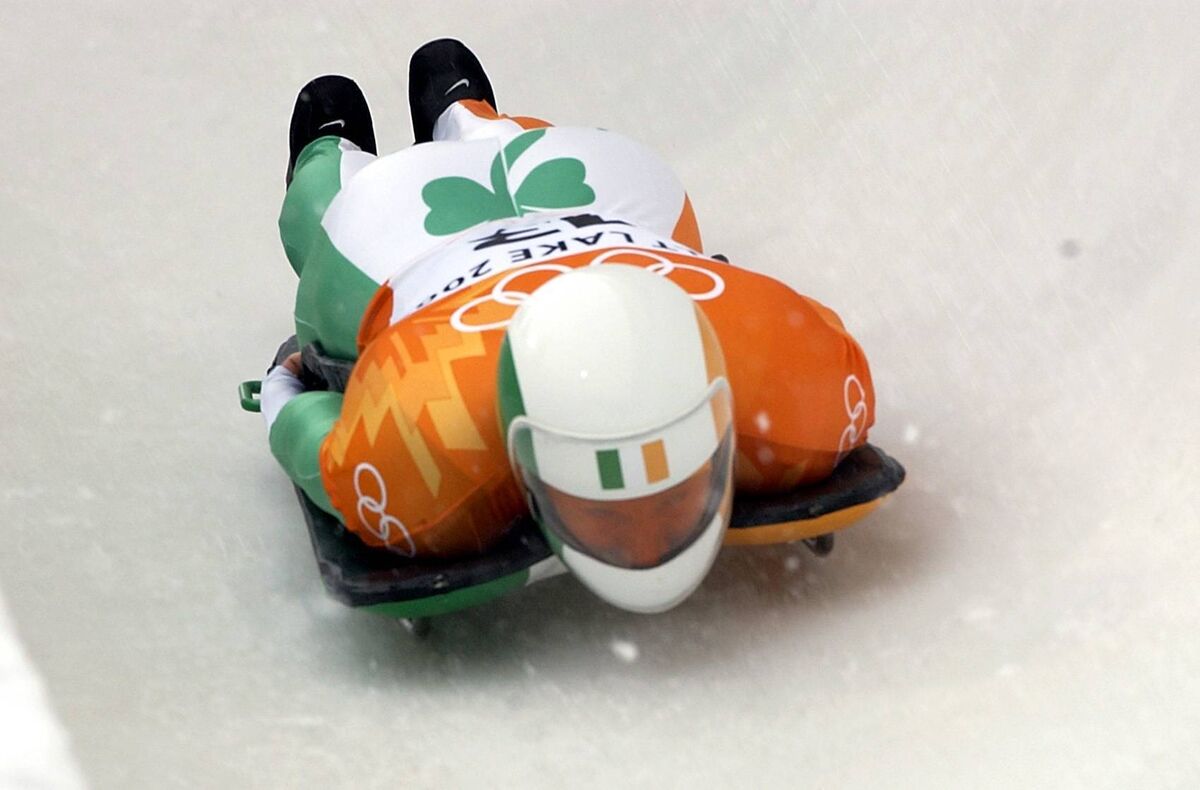
Wrottesley was introduced to the sport of skeleton racing on the famous Cresta Run in St Moritz. Skeleton racing was restored to the Olympic programme in Salt Lake City and Clifton came within 0.42 seconds of winning the most improbable medal in Ireland’s Olympic history, when he finished in fourth place in the event on February 22, 2002.
X-Factor
The X-factor has always been part of the Winter Olympics but the introduction of Freestyle Skiing events such as Moguls, Half Pipe, Slopestyle, Snowboarding and Big Air have elevated the spectacular to incredible levels and provided Seamus O’Connor and Brendan ‘Bubba’ Newman with an opportunity to display their gymnastic and acrobatic skills and introduced a new vocabulary to the Irish sports conversation.
Y is for youngest
Ireland’s youngest Winter Olympian, Seamus O’Connor was aged just 16 years and 125 days when he competed in the snowboarding slopestyle event in Sochi, one of his ancestral backyards. O’Connor was eligible to represent at least four countries at Sochi including Russia as his mother Elena emigrated to the USA from Maykop, a city just 100km north of Sochi. The prodigy opted for Ireland. O’Connor was one of only three athletes to compete in both the half-pipe and slopestyle events. In Beijing, O’Connor will become the first Irish athlete to compete in three Winter Olympics.
Z is for Zhanghjiakou
Zhanghjiakou,180km north-west of Beijing is one of three Olympic venues in use for the 2022 Games and is the venue where Irish competitors in freestyle skiing, snowboarding, and cross-country skiing, will compete.
CONNECT WITH US TODAY
Be the first to know the latest news and updates



